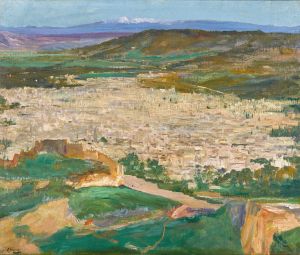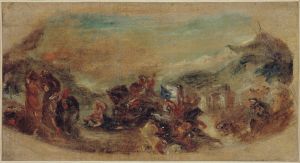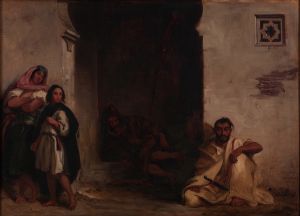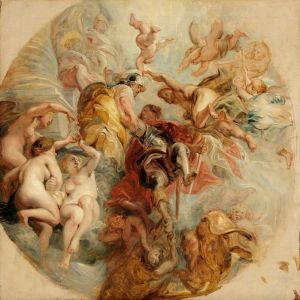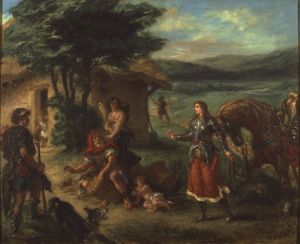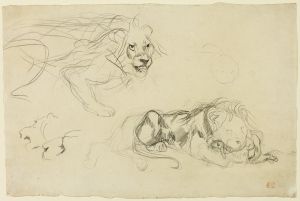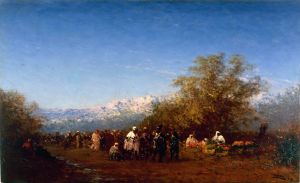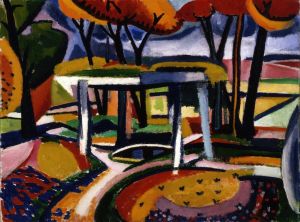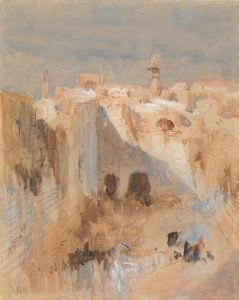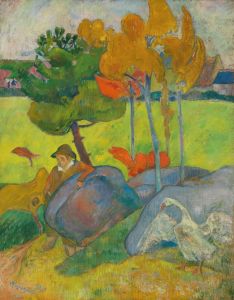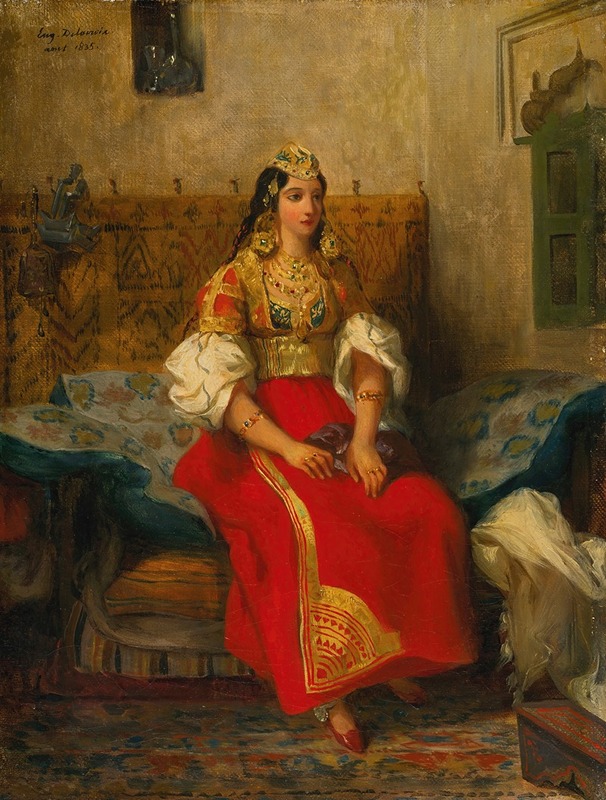
Juive de Tanger en costume d’appart
A hand-painted replica of Eugène Delacroix’s masterpiece Juive de Tanger en costume d’appart, meticulously crafted by professional artists to capture the true essence of the original. Each piece is created with museum-quality canvas and rare mineral pigments, carefully painted by experienced artists with delicate brushstrokes and rich, layered colors to perfectly recreate the texture of the original artwork. Unlike machine-printed reproductions, this hand-painted version brings the painting to life, infused with the artist’s emotions and skill in every stroke. Whether for personal collection or home decoration, it instantly elevates the artistic atmosphere of any space.
Eugène Delacroix, a prominent French Romantic artist, is known for his vivid use of color and expressive brushwork. Among his many works, "Juive de Tanger en costume d’appart" (Jewish Woman of Tangier in Indoor Costume) stands out as a testament to his fascination with North African culture and his ability to capture the essence of his subjects with sensitivity and depth.
Delacroix first traveled to North Africa in 1832, accompanying a diplomatic mission to Morocco. This journey had a profound impact on his artistic vision, providing him with a wealth of inspiration that would influence his work for years to come. The vibrant colors, exotic landscapes, and diverse cultures he encountered during his travels were a stark contrast to the European settings he was accustomed to, and they left a lasting impression on him.
"Juive de Tanger en costume d’appart" is believed to have been painted during or shortly after Delacroix's visit to Morocco. The painting depicts a Jewish woman from Tangier, dressed in traditional indoor attire. Delacroix's portrayal of the woman is both respectful and intimate, capturing her in a moment of quiet dignity. The attention to detail in her clothing and the subtle play of light and shadow on her face highlight Delacroix's skill in rendering texture and emotion.
The painting is notable for its rich color palette, a hallmark of Delacroix's style. The use of deep reds, blues, and golds creates a sense of warmth and opulence, drawing the viewer into the scene. Delacroix's brushwork is both precise and fluid, allowing him to convey the intricate patterns of the woman's attire while also capturing the softness of the fabric.
Delacroix's interest in Jewish subjects was part of a broader fascination with the diverse cultures he encountered in North Africa. During his travels, he filled sketchbooks with drawings and notes, documenting the people, architecture, and landscapes he observed. These studies served as the foundation for many of his later works, including "Juive de Tanger en costume d’appart."
The painting reflects Delacroix's Romantic sensibilities, emphasizing emotion and individualism. His portrayal of the Jewish woman is not just a representation of her physical appearance but an exploration of her inner world. The contemplative expression on her face invites viewers to ponder her thoughts and emotions, creating a connection between the subject and the audience.
"Juive de Tanger en costume d’appart" is an example of Delacroix's ability to transcend cultural boundaries through art. By capturing the beauty and complexity of his subjects, he invites viewers to appreciate the richness of different cultures and the shared humanity that connects us all. This painting, like many of Delacroix's works, continues to be celebrated for its artistic merit and its contribution to the understanding of cultural diversity in the 19th century.
Today, Delacroix's works, including "Juive de Tanger en costume d’appart," are held in high regard and can be found in major art collections around the world. They serve as a testament to his enduring legacy as a master of Romantic art and a pioneer in the exploration of cultural themes through painting.





